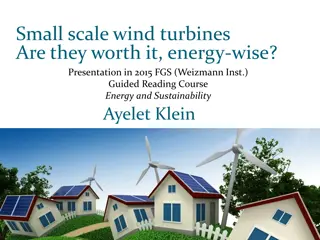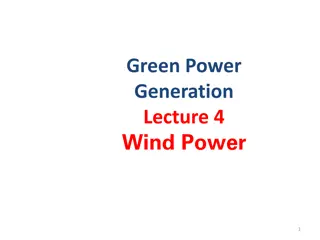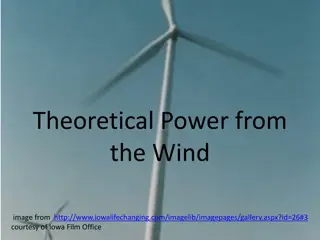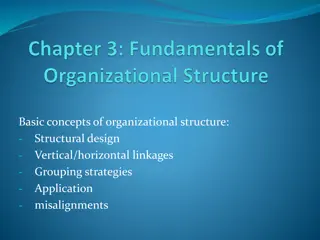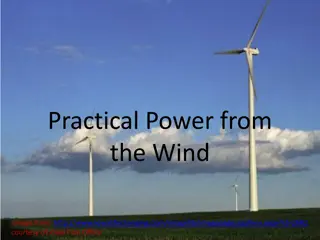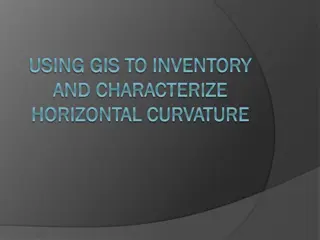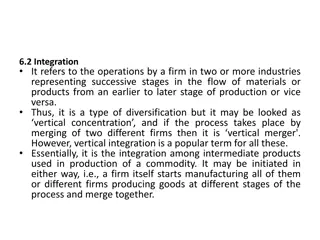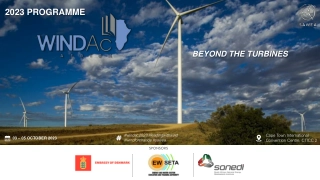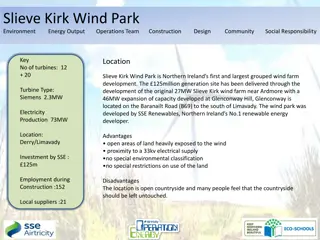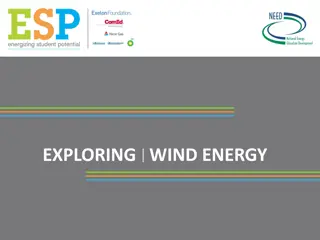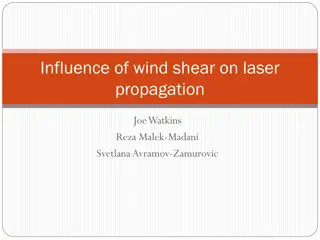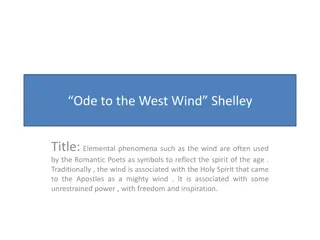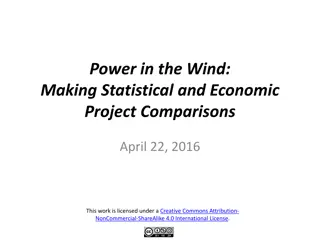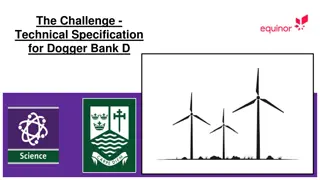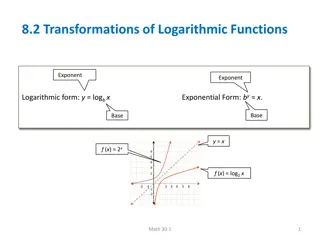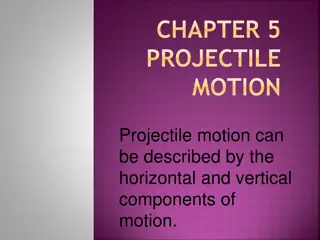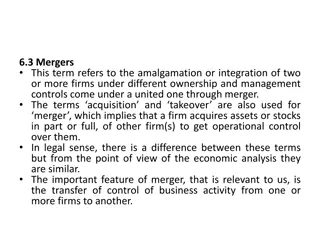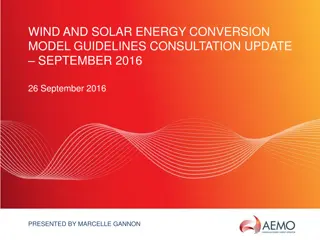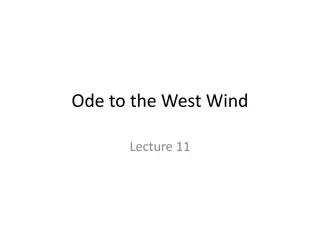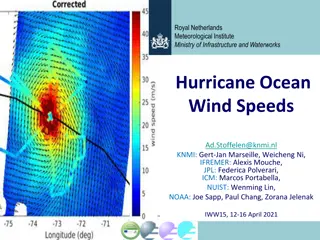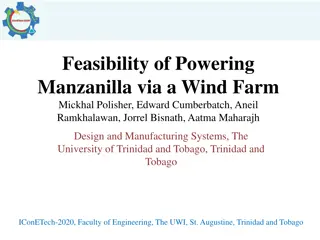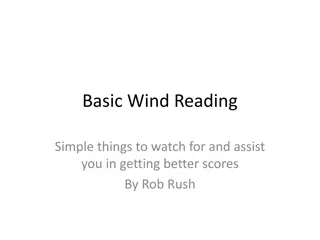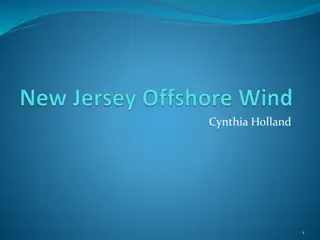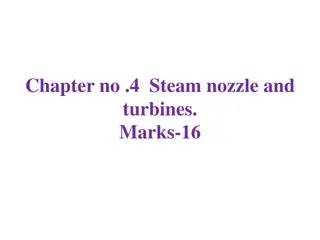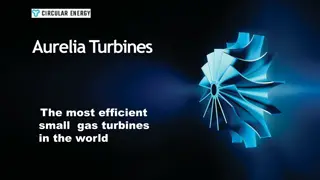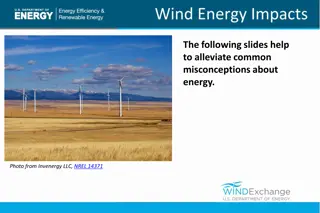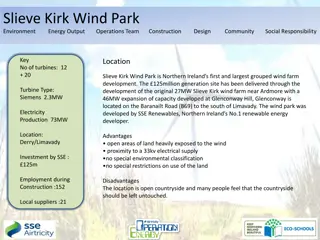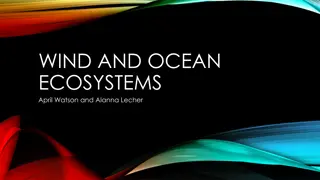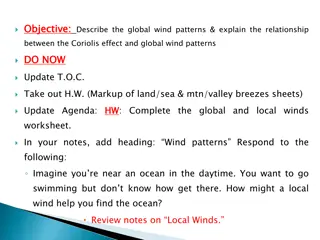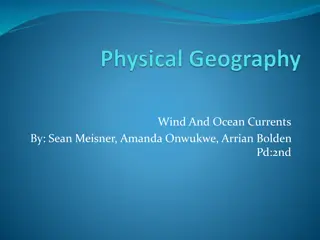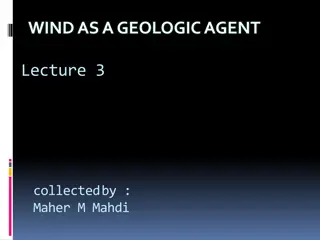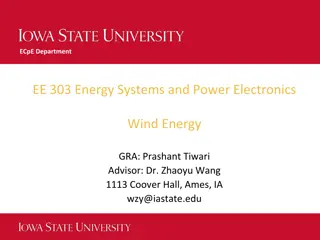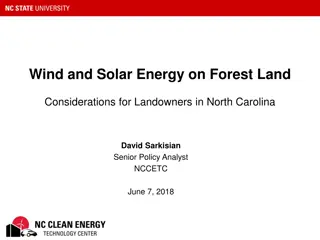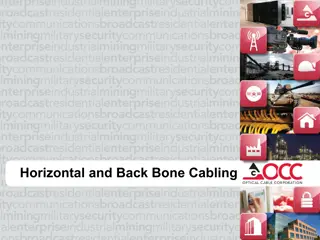Comparison of Vertical and Horizontal Axis Wind Turbines
Vertical axis wind turbines (VAWT) include Darrieus, H-Rotor, and Savonius designs, while horizontal axis wind turbines (HAWT) have advantages such as better performance at greater heights and stronger winds. VAWT face challenges like self-starting and commercial success. Both turbine types operate on lift and drag principles, with HAWT being commercially successful due to good performance and reliability. However, VAWT present advantages like self-starting ability but have not been very successful commercially. The Betz Limit states that lift turbines can theoretically capture 59% of the wind, while drag turbines can capture 15%. HAWT benefits from good performance, reliability, and ability to harness stronger winds at greater heights.
Download Presentation

Please find below an Image/Link to download the presentation.
The content on the website is provided AS IS for your information and personal use only. It may not be sold, licensed, or shared on other websites without obtaining consent from the author. Download presentation by click this link. If you encounter any issues during the download, it is possible that the publisher has removed the file from their server.
E N D
Presentation Transcript
The axis is of rotation is parallel to the ground. These are the most common type of turbines. Operates on lift principle image from: http://www.nrel.gov/learning/re_wind.html
This is an image of a Darrieus wind turbine. Egg beater turbine is another name. It is one type of vertical axis turbine since its axis of rotation is vertical to the ground. Have not been very successful commercially Operates on lift principle image from: http://en.wikipedia.org/wiki/File:Darrieus-windmill.jpg
H-Rotor is a another type of VAWT It is a vertical axis turbine since its axis of rotation is vertical to the ground. It can self-start Have not been very successful commercially Operates on lift principle image from: http://en.wikipedia.org/wiki/File:Tassa_5KW_2_ElectronSolarEnergy2.jpg
Savonius is a another type of VAWT It is a vertical axis turbine since its axis of rotation is vertical to the ground. It can self-start Have not been very successful commercially Operates primarily on drag principle image from: http://en.wikipedia.org/wiki/File:Tassa_5KW_2_ElectronSolarEnergy2.jpg
Lift turbines can theoretically capture 59% of the wind (Betz Limit) Drag turbines can theoretically capture 15% of the wind Drag turbine requires more material source: Gipe, Paul. Wind Power. White River Junction, VT: Chelsea Green Publishing Company, 2004.
HAWT - ADVANTAGES VAWT - DISADVANTAGES Wind is weaker at ground level and there is more turbulence at ground level due to obstructions. Notorious for poor reliability since the lift forces reverse direction every revolution. Darrieus design can t self start unless orientated properly. Wind is stronger at greater heights. A HAWT can be placed at heights to take advantage of strong winds. Good performance & reliability Self starting Commercially successful
HAWT - DISADVANTAGES VAWT - ADVANTAGES Difficult to service due to height. In most models a crane is needed to install a new generator or drivetrain. Needs yaw system to track the wind. Generator & drivetrain is at ground level so that it is easier to service. It is omnidirectional so it does not need gears & controls to track the wind.




